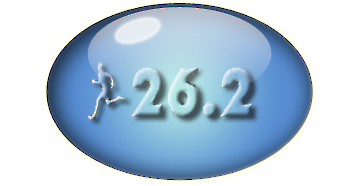Base Training over 5 hours
This section is for those whose marathon times will most likely be over 5 hours. Base Training is the most valuable aspect to marathon running. If this is your first marathon and you do not have any estimate on how fast you can run, then this is the place to start. You should know, you are in good company. In most marathons, over 40% of the finishers will be around 5 hours or slower.
It is best, for those running over 5 hours, not to focus on the finishing time goals. Instead the goal is to get you to the finishing line, hopefully in a manner that will inspire you to try it again, or at least continue with running.
Setting a goal to run a marathon is stressful for many people who haven’t yet run one. But we want to remove that stress. Statistics show that over 95% of the people who make it to the starting line will finish the race. By following this system system your odds are closer to 99 percent.
Tracking all the runners I have personally coached over the last decade, I have yet to have a single runner that failed to get to the end.
Active Walking
We encourage to incorporate “active” walking in your runs. The motto is to run easy/ walk strong. This means your walking pace should be at a pace where you are recovering from the run portion but the walking pace is still fast enough to cover ground. This is almost counter intuitive. Most people would think that they should run hard then use walking to take a break and recover.
It is important to understand that running is about efficiency, especially in the marathon. If one can cover ground at a sustainable pace then your overall time will be faster. If you run easy you will cover more ground before you have to walk. Over the course of this training program, eventually you will find you can actually run easy for a sustainable length of time without having to take as many walk breaks.
Run Easy/ Walk Strong.
During the buildup phase we will introduce what is known as the Long Run . This is the center piece of this workout system. This is the run that will provide you the most benefits. There is detailed information in the Long run section.
Since we have such a disparity on peoples pacing we will be focusing on time as opposed to distance in the base training phase.
Unlike other training programs, there will be no long runs over 15 miles. There are some training programs that will have you run up to 26 miles just to prove you can do it. There is no evidence that running these long distances help. Certainly those with lessor experience should be particularly careful when they are out exercising over 2 hours.
Many people want to take the day off after the Long Run. I am not in favor of this. If you do take days off running, it is better taking the second day off after the long run.
The day after the long run is perhaps the most important run of the week. Doing this short run very easy will help you recover quicker. It will flush out the lactic acid and help provide blood to those overused muscles. Be careful! After any hard workout, you will be more injury prone the following day.
Never run a race or a hard workout the day after your Long Run! For those that can not get a run in the day after a long run, then try to take a walk after dinner. This will be immensely helpful for your workouts later in the week.
It is indispensable to understand that the short runs during the week are not supposed to be hard runs. Understandably there are time constraints for many people. Over time there is greater value running 4 miles at a slower relaxed pace than running 3 miles and a hard exhausting pace.
Click this link to see your training schedule Schedule for Marathon Training for over 5 hours.
